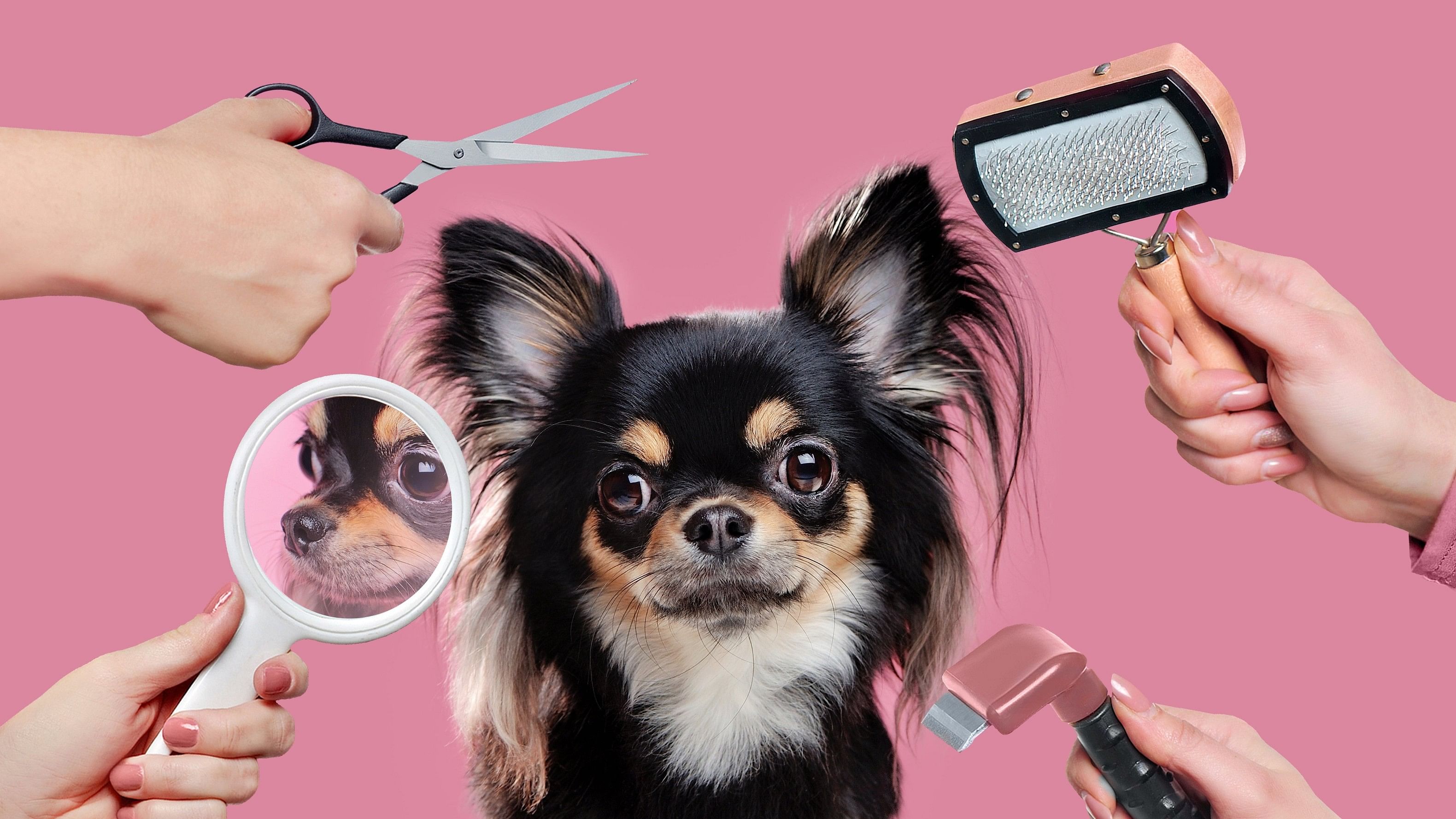
Credit: iStock photo
Last month, luxury fashion brand Dolce and Gabbana launched a first-of-its-kind pet perfume for our four-legged canine companions. The scent of the news diffused quickly worldwide. The brand claims, Fefé — as the scented mist is called — is alcohol-free with ‘delicate notes of ylang ylang, musk and sandalwood’. I’m no perfume connoisseur but the news had me gasping for air and a stink of healthy scepticism filled my brain. Why would a dog need perfume?
In the canine world, a dog’s smell — whatever that is — is its name and signature. A whiff in the air can tell a lot about a dog if you have a dog’s nose — its health, sex, age, last meal, state of mind, anxiousness or fear — based on which other dogs decide how to react. Why then would we want to override the basic essence of dog communication, with hints of random herbs or trees? Unlike us, dogs don’t have sweat glands on their fur. A dry, healthy coat has natural cleansing oils that work with good bacteria to keep the bad, smelly ones away. More importantly, how subtle could the ‘delicate hints’ of the perfume be for a mutt’s nose that can sniff out cancer or narcotics?
Dog perfume may be the newest addition, but the list of trendy, almost unnecessary and sometimes harmful pet accessories in the market today is long. In the capitalistic world we live in, where love is judged by how much one spends on loved ones, pet companies are vying for every buck pet parents are willing to trade for the love of their pets. If you carry a thinking brain to a pet store, finding a safe, healthy and necessary pet accessory amid the thousands that promise the moon can be like looking for a needle in a haystack.
More plastic!
Let’s start with the toy aisle dominated by nylon chew toys for dogs and crinkling plush toys with polyester fiberfill for cats — both promising to ward off boredom and keep our pets entertained. They come in fancy colours our pets probably can’t even see, stereotypical shapes that they don’t really care about, and tons of plastic. In a world brimming with microplastics in our food and air, threatening our health every day, why would anyone want to intentionally give our beloved pets plastics to chew on? Ropes, stuffed animals, squeaky balls, interactive toys — there are one too many things but they are all the same — plastics that our pets did not ask for and don’t need.
The grooming aisle is another rollercoaster ride. On the one side are shampoos and stay-on conditioners for every coat type and breed, also infused with smells of all kinds. That’s not the worst. Then there are colouring shampoos and permanent hair colours for pets in vivid hues of purples, pinks, greens, blues and yellows! Nature, with genes and pigments, already has bestowed some of the choosiest colours and patterns for dogs and cats, and here we are creating our palette on top of it. I shudder to think what these products do to the fur, the skin underneath and the sensitive nose and eyes our pets have. There are also tubes of toothpaste and oral health products whose ingredients, on a closer look, ring alarm bells. If you fancy more, you also have nail paint and ‘pawdicure’ products.
Push buttons
A new craze in the last couple of years is training push buttons — a set of coloured buttons that speak human words when pressed — which you could train your pets to press to ‘communicate and talk’ to you. At first glance, this is revolutionary — don’t we all want to talk to our pets in the language we both understand? However, on a closer look, you realise you have to train your pet to pick a colour to press and tell you what they want — a treat, a toilet break, or that they love you. While this concept initially excited scientists, a recent study says dogs are merely responding to the owner’s body language by pressing buttons, instead of communicating — defeating the whole purpose of these buttons. When evolution has tailored the canine eyes and feline voice to pull the strings of our hearts and really talk, what chance do these buttons have?
This is not to say you shouldn’t splurge on your pets but I am concerned that even if you have all the money in the world, finding a safe and healthy toy or an accessory for your pet can still be a challenge. Unlike human products, the pet market is barely regulated and there is no real conversation about all the stuff that goes into a pet product. Before you pick the next trendiest toy or a nail colour for your furry companion, take a hard look at what goes into making it. Our pets have only us to speak for them. As for Pippi, broken twigs and birds are quite enough to keep him entertained!
Tailspin is your monthly column on everything that’s heartwarming and annoying about pet parenting.
The writer is a science communicator and mom to Pippi, a five-year-old rescued Indie, who is behind her drive to understand dogs better.
She posts on X @RamanSpoorthy or mail at dhonsunday@deccanherald.co.in